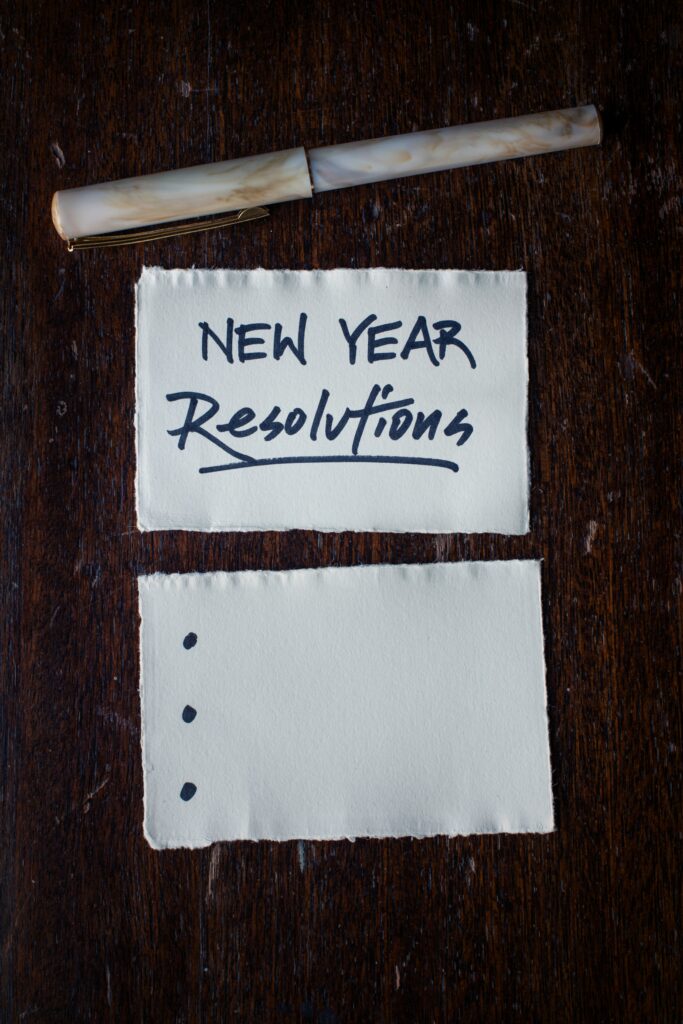I love coming up with big ideas, dreaming of the future, envisioning all kinds of possibilities. Following through? A bit trickier. Being consistent? Even harder. I’ve been like this for as long as I can remember; I have a vivid memory from high school of my mother exclaiming (with exasperation), “You just don’t have discipline!” Since then, I’ve accepted the “I’m not disciplined” as my identity, making it harder to change and quite frankly, a bit of an excuse.
This year, before immediately diving into my resolutions, I reflected on how to best set myself up for success to actually follow through and be consistent. Here are eight tips that have helped me, and may help you too:
- Know yourself. I think part of why I resist the idea of discipline is that it reminds me of something negative. It conjures up a Bootcamp, a drill sergeant yelling at me to keep doing pushups. (Hmm, maybe that sergeant is my mother? I’ll talk about it with my therapist later.) Speaking of therapy, over the years, I’ve realized that I do better with positive reinforcement. Recently, I came across a report card from kindergarten and I think my teacher said it best: “When given a gold star, Claire will work extremely hard.” It turns out not much has changed over the past thirty years. But what motivates me might not be the same for you. What’s your gold star?
- Make it bigger than you. A way to keep motivated and hold yourself accountable is to go beyond how something benefits you. Part of it is how we’re socialized as women to be accommodating, and so what often happens is that we deprioritize things we deem “selfish.” A way to counter that is to connect your resolutions to a higher purpose, whether it’s exercising not just because you want to lose weight, but because you want to be healthier for your family or letting go of perfectionism because it will make it a better working environment for your team.
- Ramp up. A few months ago, I committed to checking my emails for one hour every day. I did that for about a week. It turned out that going from rarely checking my emails to checking them for an hour a day is actually pretty daunting. Instead, I’m beginning with checking them for 15 minutes a day for one month and then increasing from there. Here’s the trick though. Even if I’m feeling on a roll and want to keep going past those 15 minutes, I stop myself. Why? It reinforces my habit of only doing things when I want to; i.e. being emotionally driven to accomplish something. This is about developing a system that can exist outside of how I feel on a given day.
- Break it down. In our excitement to achieve big things, we often skip over what it takes to actually get there (and we underestimate how long it takes.) We’re also not specific enough. Now, whatever I set out to do, whether it’s a task for the day or a goal for the future, I map out all the ways I can whittle it into smaller chunks. I find the platform todoist.com to be extremely helpful for that.
- Make it easy. One of the things I learned from James Clear’s best-selling book, Atomic Habits, is that in order to increase the odds of making behavior change is to make it as easy as possible. For example, despite owning a juicer, I never use it. Why? It’s buried away in the depths of my cupboard. Just the thought of dragging it out, setting it up, etc. is enough for me to grab a bag of potato chips instead. So now, I have it on my kitchen counter where I can see it every day as I reach for something unhealthy. (I have yet to use it though. Maybe I need to put the veggies next to it?)
- Replace a “don’t” with a “do.” Knowing that I’m motivated by the proverbial gold star, a game-changer for my follow-through has been taking a negative thought and turning it into a positive. For example, instead of “stop binge eating”, it’s become “be more mindful when eating.” Or, “check social media less” has turned into “designate specific social media time.”
- Create a system of accountability. If something’s not on a calendar, it doesn’t exist so a system of accountability for me is blocking out time in my calendar and putting up an away message. Not only does it remind me to actually follow through, but it also helps me set boundaries with others. Plus, I’ve had people respond to my away messages that it’s inspired them to put up their own!
- Schedule check-ins with yourself. Whenever I find myself dragging my feet on something, I assume it’s because I’m undisciplined. However, procrastination doesn’t always come from laziness, but rather fear. Fear over failing, etc. Before I start guilt-tripping myself, I explore all the reasons I might be avoiding this certain task. I’m also open to change. Just because this was a resolution I set on January 1st, it doesn’t mean it’s something I want anymore. That’s okay! It’s being flexible, not failing.
I do want to be clear that giving advice is a lot easier than taking it. So part of my resolution for this year is to yes, follow-through, but also be transparent as I do it. Follow me on Instagram at @clairegetspaid and share your own tips!


